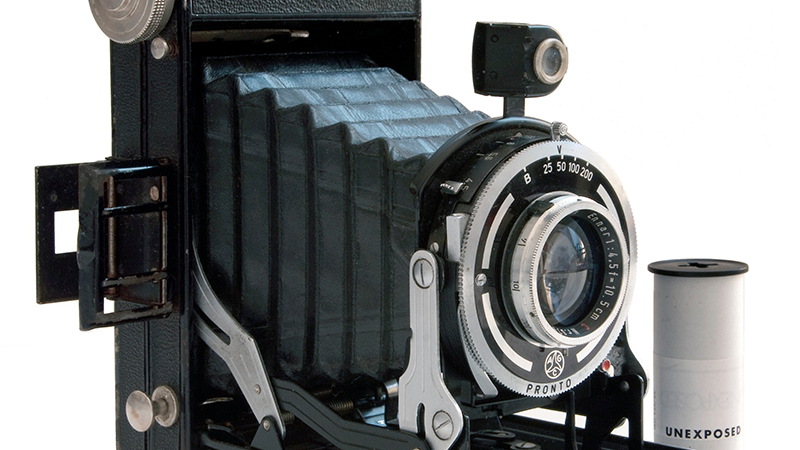One of the enduring truths of life is that, over time, things fade away. How many times have we seen a character in a movie lovingly stroke a fragile old family photo, or a camera pan down the mantle to reveal a character’s history through fading and aged images.
Sure, printed photos will still age. So the concept of the faded family photo is still valid, once it’s printed.
But consider the lives of ‘digital natives’ — i.e. kids who’ve grown up to know our current age of social media, constant digital contact, and endless digital video and photography as their norm. Most of the time we hear warnings about how anything you post to Facebook will stay out there forever. And that’s probably true (note to my kids: watch it!). But what about the flip side of that same argument? ANYTHING you digitally photograph or record as digital video will — with only a modicum of technology support — remain exactly the same for the rest of your life. And probably a heck of a lot longer than that.
A child’s first birthday party… the contents of the photo may look dated 100 years from now because of the clothing or decor, but the colors will not fade. The image will look the same.
Our cameras will continue to get better resolution, but already a single digital photo taken on a smartphone has enough resolution to be easily blown up into a very clear 8×10 print (in fact, most people cannot see resolution issues when a typical smartphone image of 8mp is blown up even to poster size, unless they are studying the image very closely). This means that you can present a crystal clear, newly printed, poster-sized image in high resolution of that same 1st birthday party photo taken today as the person’s 100th birthday party gift in 2114.
Time has, for the most part, ceased to be a degradation factor in photography.
In fact, the effects of time on photography have been so diminished, so quickly, that people seem to have gone looking for an alternative — a way to make their pristine digital images have some of the panache and kitsch of old-time photos. Isn’t that exactly what Instagram does now?
Here’s another interesting note. When we look back, even just 100 years, we have to rely on extremely spotty photographic evidence to understand the world of 1914. For the most part, photography in that age was reserved for the rich and important. Faded recordings in black and white showing everyday life exist, but in extremely limited quantity. Go back another 100 years to 1814, and the number of photos is much easier to quantify: zero (the earliest known surviving photograph was taken in 1826, twelve years later).
Compare that with 2114, when, it would be quite reasonable to assume, an incredible number of digital photos from 2014 will still exist. But how many? Let’s take a look…
The human race is estimated to have taken 3,800,000,000,000 (that’s 3.8 trillion) total. All time. Since that first one I noted above. That’s a heck of a lot, but consider this…
By 2012, more than 380,000,000,000 (that’s 380 billion) photos were taken each year — this number is no doubt larger now, but even at 2012 numbers, this means that 1 in 10 of every photograph ever taken was taken in 2012.
Let’s say 99% of those disappear in the 100 or so years between now any 2114. That means there will still be 3.8 billion photos for future historians to sift through. I think they’ll get a rather clear view of our current world from that number of images, don’t you?
It gets crazier. Also in 2012, Facebook reported that 300,000,000 photos were uploaded to their social media site every day. Which, roughly rounded, means about 1 in every 3.5 photos taken in 2012 ended up on Facebook, or looking at the long view, roughly 1 in 35 of every photo EVER TAKEN was put on Facebook in just the year 2012.
That’s nuts, I know. If I mis-mathified that, someone please tell me… But I checked it and believe those are correct assessments (for some even scarier, larger, updated numbers, take a look here).
And what about video? According to YouTube’s statistics page, and ONLY considering YouTube (imagine if I included other sites, too!), 100 hours of video are uploaded every minute.
There are 525,600 minutes in a year. That means, in 2014 alone, 52,560,000 hours of video will be uploaded to YouTube. 52,560,000 hours is 2,190,000 days, which is 6,000 years. If you were to watch every video uploaded to YouTube from just the year 2014, it would take you 6,000 years. Even if you like to binge watch seasons of ‘Breaking Bad,’ that’s still asking a lot. You’d better make popcorn.
Don’t forget almost all of this photography and video is digital and has the capability to outlast, in perfect quality, all of our lifespans. So when we look back a mere 200 years, there’s not a single photo to see. But 200 years in the future, a perfect picture of life in 2014 will still be available. No, not even a perfect picture. A perfect HD video.
People living in 2114 may very well have the ability to take a crystal clear look at that selfie you just took. I hope it was a good one.
